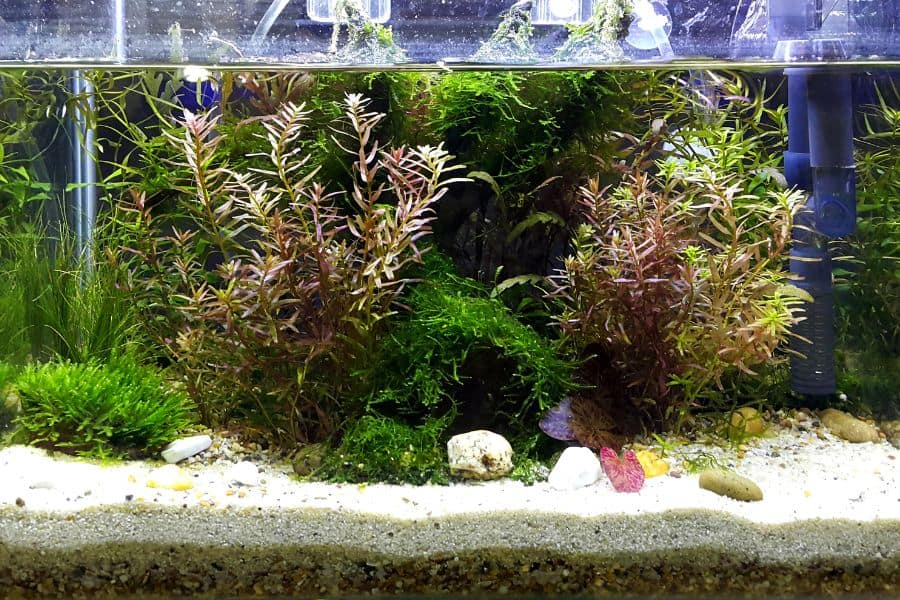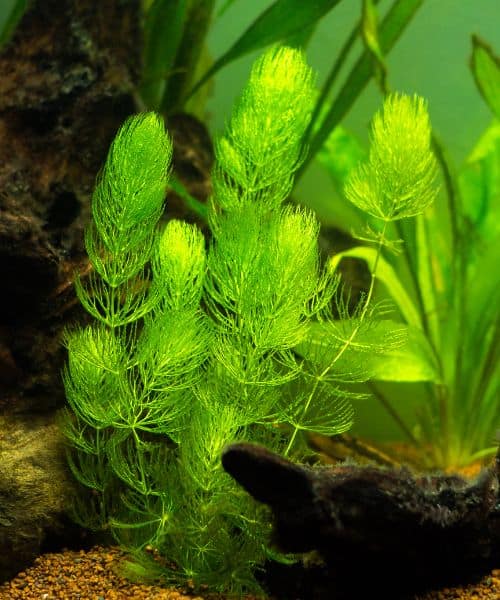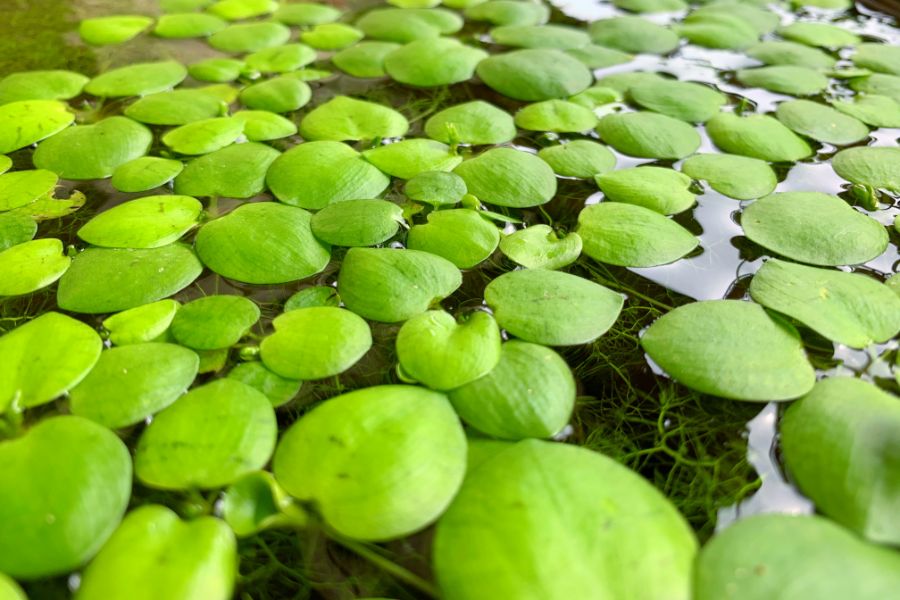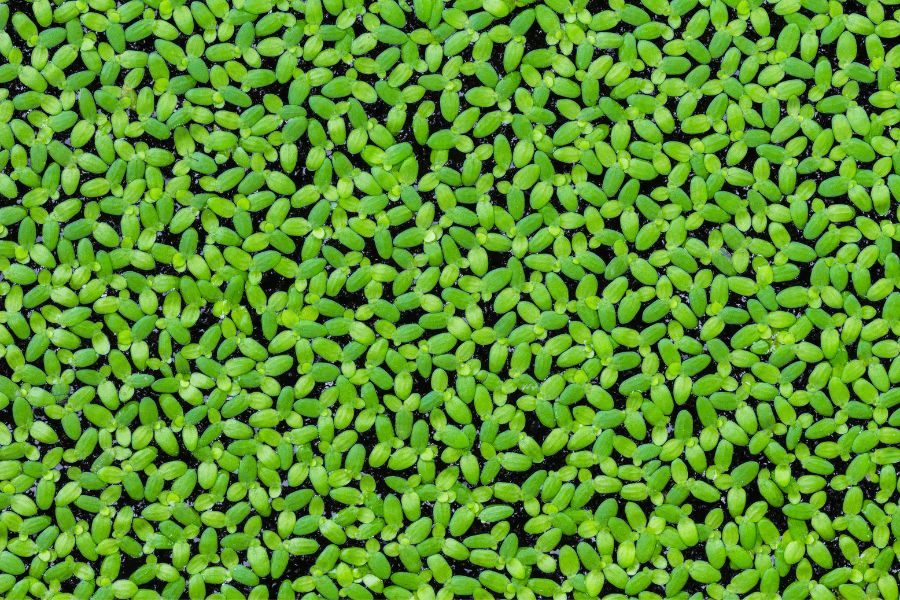Expert aquarists are meticulous about water chemistry. They frequently test their water parameters and go crazy whenever the results fall behind or beyond the normal range.
Nitrates are among the many water parameters measured. Although nitrate tolerance varies per species, keeping it under 25 ppm is ideal and will not harm your fish. However, if their level spikes, this chemical compound affects your fish.
Aquarium waters with high nitrate concentration disrupt cell development in fish. It leads to stress and a weakened immune system, making them prone to diseases. The tell-tale signs of nitrate poisoning in fish include the dull coloration of the body and poor feeding appetite.
While it may sound intimidating, preventing sudden nitrate spikes is easy, and even newbies can do it. All you have to do is add aquarium plants.
But why aquarium plants?
Join us in this article as we present how plants reduce nitrates in your aquarium and the best plants you can depend on to maintain balanced water chemistry.
Understanding Nitrates Using Nitrogen Cycle
Although nitrates occur naturally in your tank water, they are one of the chemicals produced during the breakdown of compounds in the biochemical process of nitrogen cycle.
Understanding the nitrogen cycle and determining in what phase nitrates formed, we have broken down the process into 4 segments.
And by the way, you don’t need to do anything as the superstars in this natural process are microscopic nitrifying bacteria.
Phase 1: Nitrogen Source
There are several sources of nitrogen in your aquarium. Aside from the nitrogen already found in your water (as a product of the last phase of the cycle), your fish food is an excellent nitrogen source. It means that the more fish food you give, the more nitrogen source you have.
Phase 2: Ammonia Breakdown
As a metabolic product of eating nitrogen-enriched fish food, your fish produces waste products in the form of ammonia. Surprisingly, their feces only contains small amounts of ammonia, and most of this highly toxic substance discharges in their gills. Some ammonia can also come from unconsumed feeds and rotting plant material.
As ammonia is released, nitrifying bacteria that commonly populate the fish gills are released simultaneously, which settle down to your substrate or colonize in the filter sponge. As the bacterial population grows, they start consuming ammonia by breaking it down and converting it into a less toxic substance – the nitrites.
Phase 3: Nitrite Breakdown
The nitrogen cycle continues with the nitrifying bacteria breaking further down the nitrites into their least toxic form – the nitrates.
Phase 4: Nitrate Breakdown
At this stage, the less toxic nitrates are absorbed by the plants or broken down further by the nitrifying bacteria and converted back to nitrogen, where the cycle repeats itself.
Fun fact: The entire nitrogen cycle takes anywhere from 2 to 6 weeks.
How Plants Reduce Nitrates in Aquarium
Being the least toxic nitrogen-derived compounds, nitrates are heavily absorbed by plants, converting them to protein for plant growth and development.
In other words, nitrates become fertilizers and this is why aquarium plants grow fast in nitrate-loaded waters.
The good thing about using aquarium plants in controlling the nitrate level in your tank is like hitting two birds with one stone. No, actually it’s three birds with one stone.
Aquarium plants are not selective absorbers and they absorb any chemical nutrient present in the water. This means that aside from nitrates, ammonia (the most toxic) and nitrites are also absorbed by them.
Column vs Root Feeders: Who’s More Effective
There are two kinds of aquarium plants based on how they absorb and feed on nutrients: column feeders and root feeders.
Also called stem feeders, column-feeding plants use their stems and leaves to absorb nutrients directly in the water column. On the other hand, root feeders rely solely on their root system for nutrient feeding.
Comparing the two types, column feeders are more effective than root feeders in absorbing nutrients since the leaves and stems are exposed to a larger area, as compared to the limited and restricted space of the substrate roots.
Hence, the species listed in our best aquarium plants to reduce nitrates are mostly column feeders. However, there’s always an exception since there are root feeders (as well as floating and carpeting plants) that are pretty effective in reducing nitrates.
The Best Aquarium Plants to Reduce Nitrates
To measure how much nitrates are absorbed, you need to bring the plant to a laboratory for tissue analysis.
However, with the plants listed in this section, you don’t need to do so since their effectiveness in absorbing and reducing nitrates in the aquarium can be seen by how fast they grow.
Amazon Sword
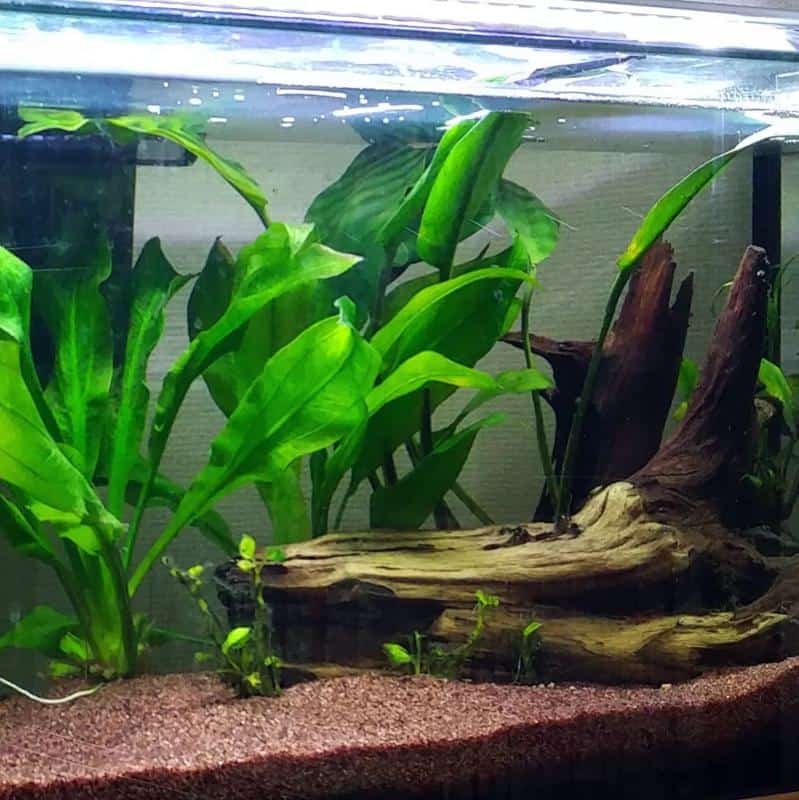
Amazon Sword (Echinodorus grisebachii) is a popular background plant due to their blade-shaped leaves that stand vertically towards the surface and form a bushy rose appearance.
This is a root-feeding plant, and its fast-growing traits can be attributed to how its root system is effective in absorbing nitrates.
But not just nitrates, Amazon Sword has a preference for ammonia, which means that this plant takes care of your water chemistry right at the beginning.
Anubias
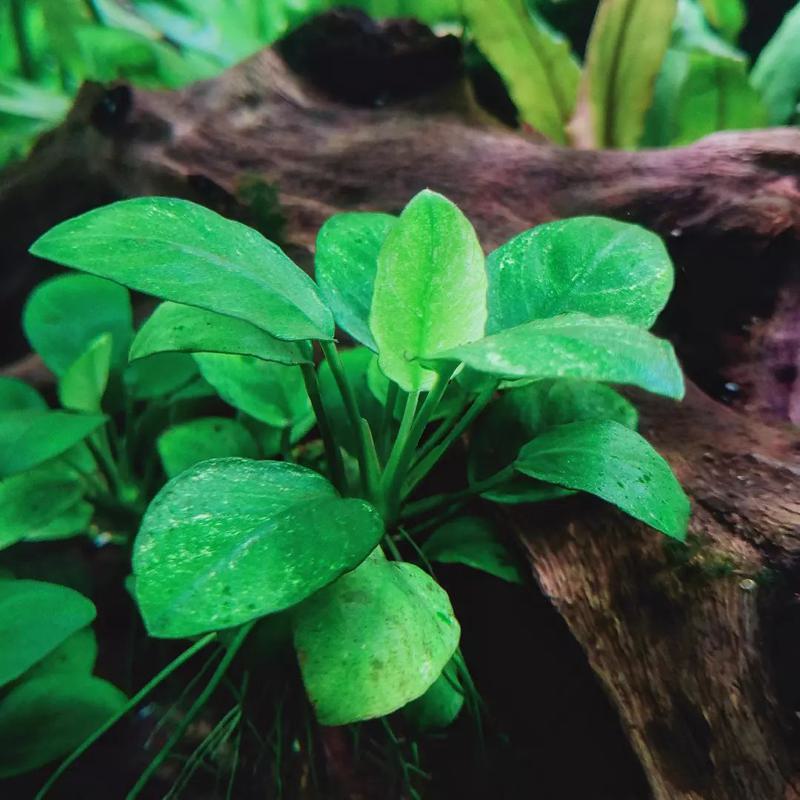
With their column-feeding properties, Anubias are attached to driftwood or any hard object and are not rooted in the substrate, making them great midground plants.
With their elevated position plus being a column-feeder, the Anubias have all the water exposure they need to absorb nitrates.
From the rhizomes in its roots up to their leaves, this plant makes use of its body parts and turns it into an asset in nitrate absorption.
Brazilian Pennywort
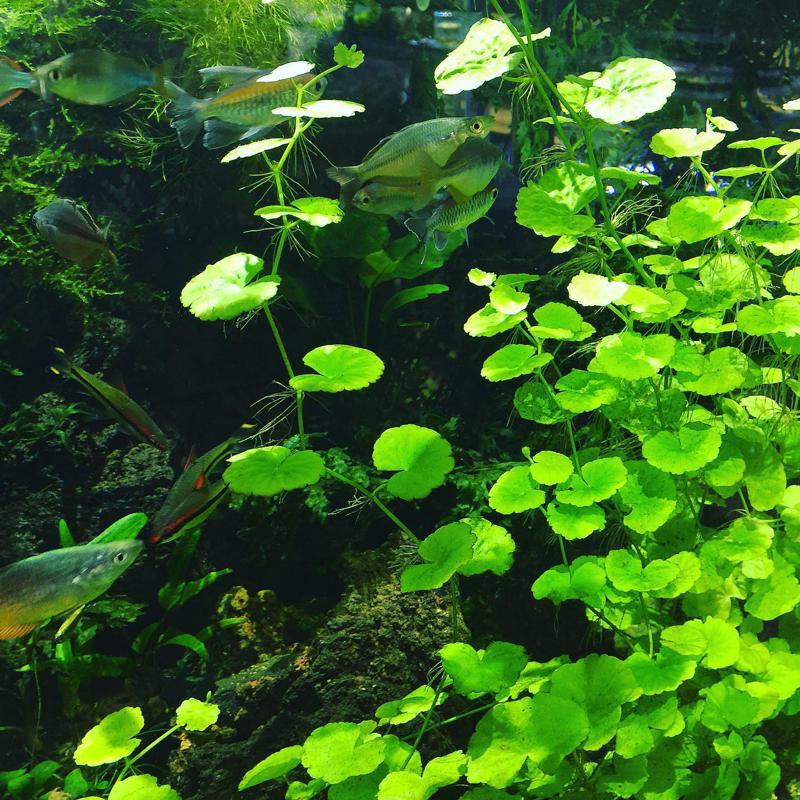
Although the Brazilian Pennywort (Hydrocotyle leucocephala) can serve as a floating plant, it should be potted or attached to driftwood to become an effective nitrate absorber.
On top of being a column feeder, what makes the Brazilian Pennywort special in absorbing nitrates are its stems. From their main root, the plant extends out long, vertical, and thin stems that sprout leaves every few inches.
It means the Brazilian Pennywort can absorb nitrates from the bottom up to their top-most leaves that can reach 24 inches tall.
Hornwort
Have you ever wondered why Hornwort (Ceratophyllum demersum) can grow up to 15 feet long? It is because of how effectively they absorb and convert nitrates into energy for their prolific growing behavior.
Hornwort’s effectiveness in absorbing nitrates and other nutrients allows them to live in any freshwater environment. The fact is, they grow so fast that they dominate local plants, potentially making them an invasive species.
Java Fern
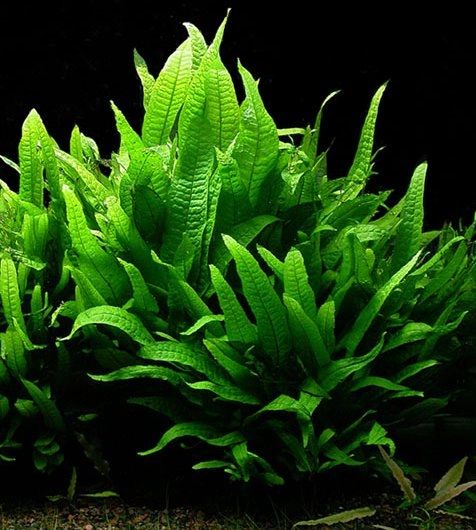
The Java Fern (Microsorum pteropus) is a beginner plant that is easy to take care of. Based on experience, many newbie aquarists get disappointed with the growth of Java Fern as they grow slowly in normal conditions.
But do not be discontented with this column-feeding plant. Even if their appetite is less for extracting nutrients directly from the water, they are still voracious when it comes to nitrates. You can see this when your water is loaded up with nitrates, they bloom out their narrow leaves making them great background plants.
Marimo Moss Ball
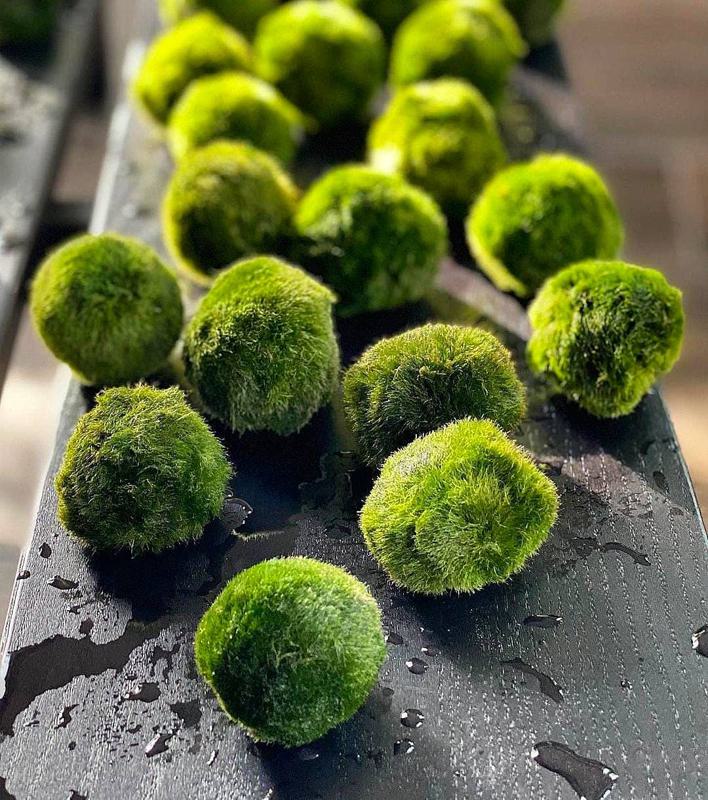
Algae love nutrients, like the Marimo Moss Balls (Aegagropila linnaei). Yes, they are one of the few true algae rolled into a sphere and sold in pet shops as one of the many aquarium plant choices.
The effectiveness of Marimo Moss Balls in absorbing nitrates works best in small tanks. Since each ball is a colony of several algae, it can easily lower down and stabilize nitrates and other nitrogen-derived compounds.
Moneywort
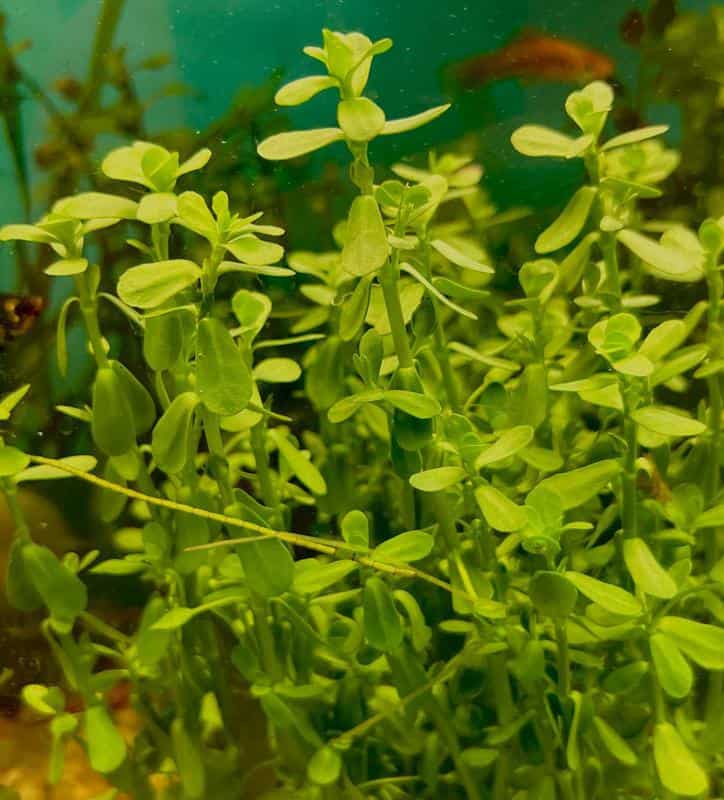
If you have a shallow tank with lots of fish, try planting Moneywort (Bacopa monnieri) to naturally take charge of balancing your water chemistry.
This column-feeding plant needs driftwood for attachment. As they start to absorb nitrates directly in the water, you will see how fast these plants grow, where their stems with coin-shaped leaves can exceed out of the surface.
You have the option to trim their overgrown stems. But we recommend you don’t, especially those that exceed the surface as it can be their avenue in producing and showing off their white flowers.
Photos
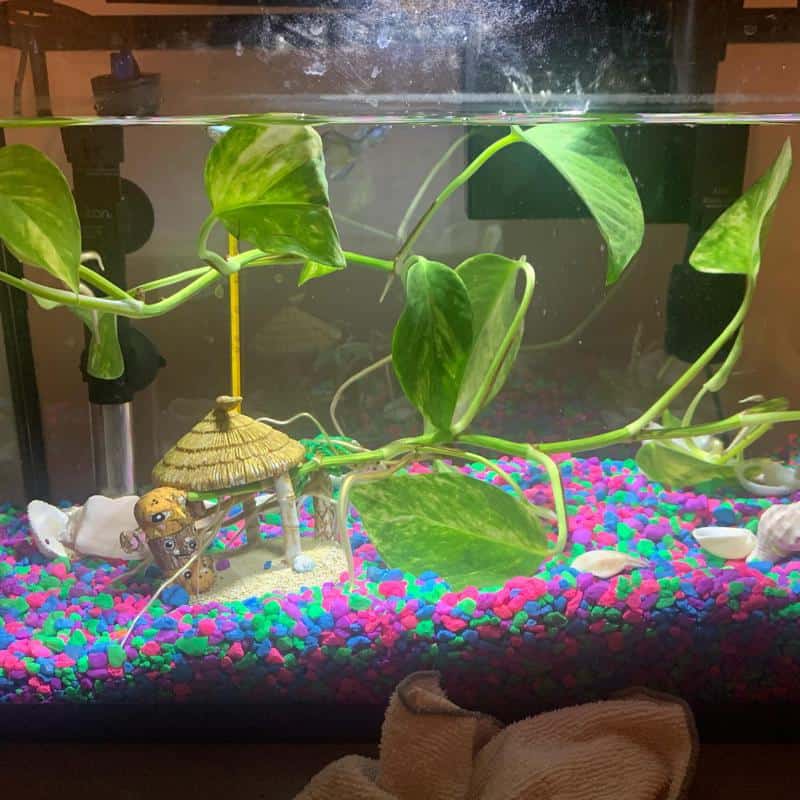
Also known as Devil’s Ivy, Photos (Epipremnum aureum) is a semi-aquatic plant commonly used in aquascaping.
They are included in our list of the best aquarium plants to reduce nitrates since they absorb fast and can stabilize your water chemistry in just 4 to 5 days.
Water Sprite
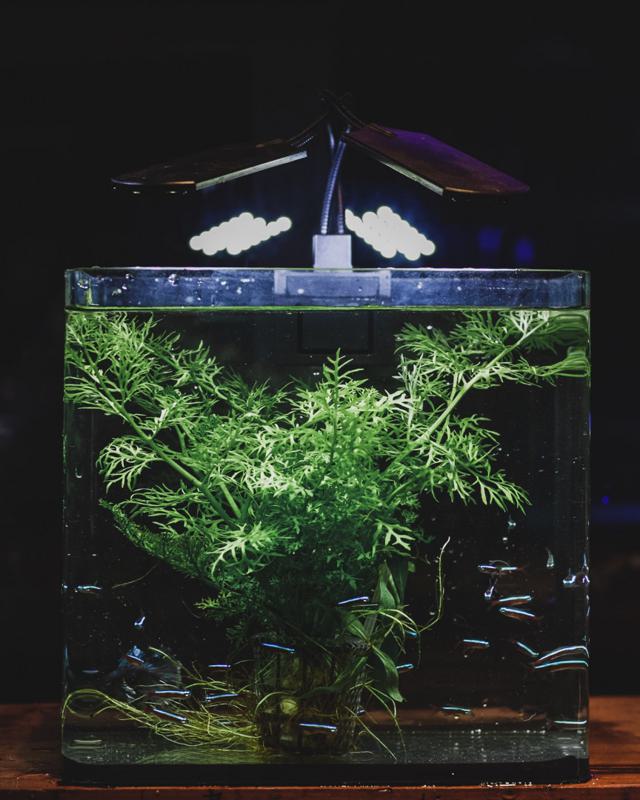
The vertical growth of Water Sprite (Ceratopteris thalictroides) with its lace-like leaves acts as a natural chemical filter in your aquarium.
Once Water Sprite adjusts to its new environment, they start growing by absorbing nitrates and other nutrients in the water. Although the leaves of Water Sprite are their primary asset in absorbing nutrients, do not underestimate their roots.
Their root system produces secondary roots that are thin and fine in texture which can also trap floating debris when you opt to make them as floating plants rather than being rooted.
Water Wisteria
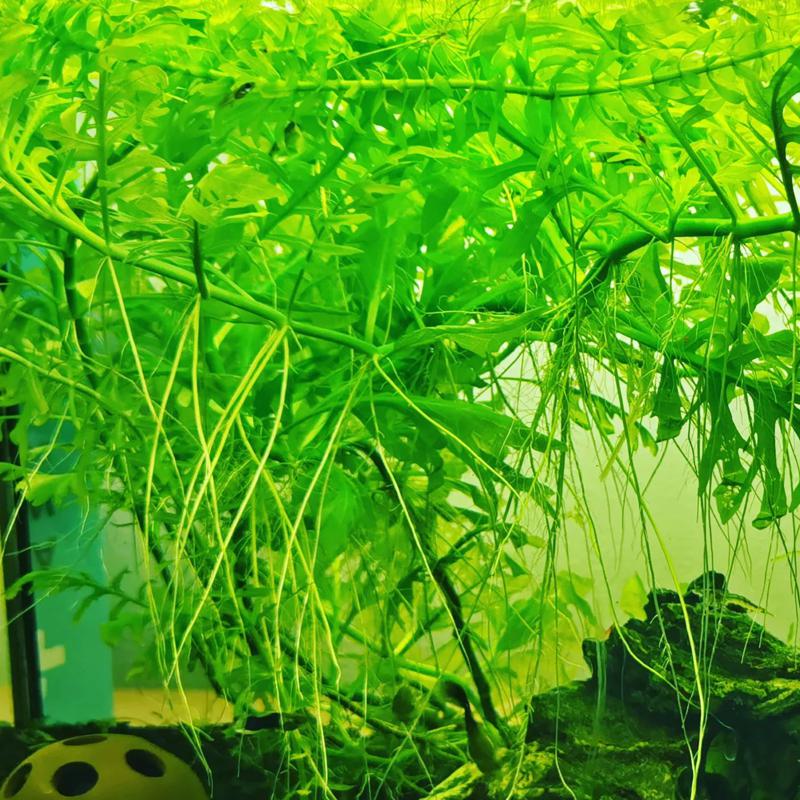
The Water Wisteria (Hygrophila difformis) is a bush-like aquarium plant that looks similar to a Water Sprite, except that its leaves are palm-shaped.
The nitrate-absorbing traits of Water Wisteria allow them to grow fast and tall, making them a great centerpiece for a tank where small fish love to swim around them.
The Best Carpeting Aquarium Plants to Reduce Nitrates
One of the areas in your aquarium where the nitrifying bacteria settle and colonize is your substrate. As they break down ammonia into nitrites and nitrates, expect water chemistry in this part of the tank may become unstable.
It is why you need to place carpeting plants where their horizontal growth guarantees that most (if not all) of the substrate is chemically balanced. Otherwise, their absence may mean the proliferation of unwanted algae.
Dwarf Hairgrass
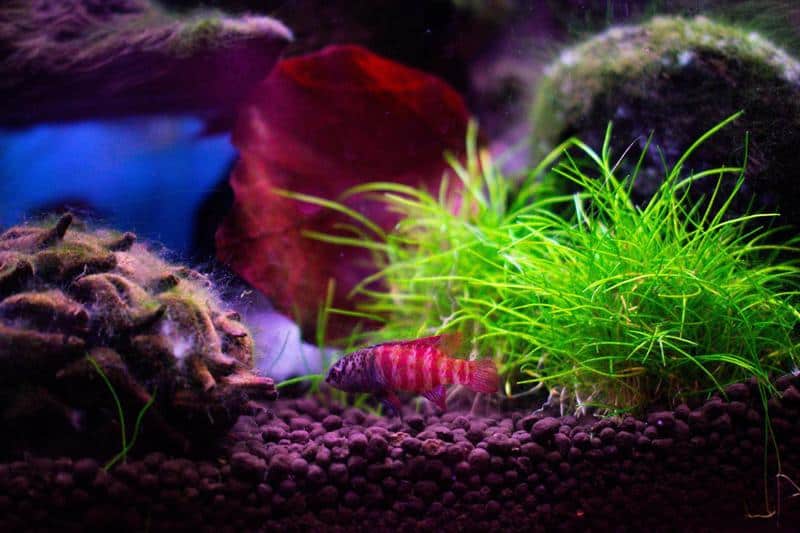
The Dwarf Hairgrass (Eleocharis parvula) is highly efficient in absorbing nitrates that it converts the chemical into protein, powering their daily growth of up to 2 inches.
But why such efficiency?
It is due to the dual workmanship of their roots and leaves that simultaneously absorb nutrients, making this carpet aquarium not a dwarf, but a giant against nitrate spike.
Dwarf Sagittaria
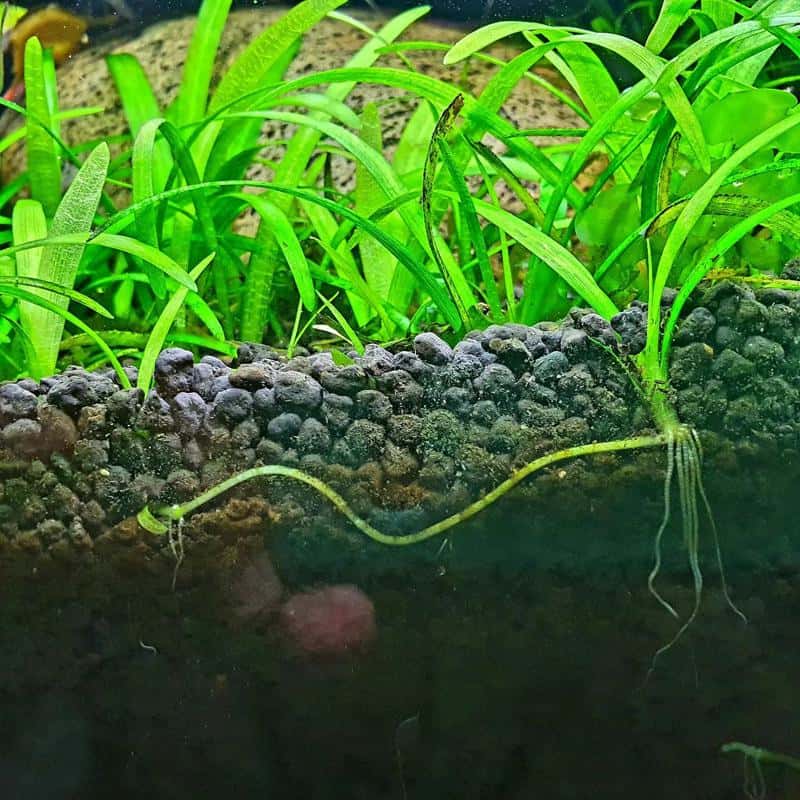
The Dwarf Sagittaria (Sagittaria subulata) is another giant in absorbing nitrates. This fast-growing carpeting aquarium plant can be left behind after planting since the nutrients they absorb is sufficient enough to power up its horizontal growth.
But there is a downside with Dwarf Sagittaria. They are easily affected, and their leaves wither when you accidentally harm them during trimming or transfer them to a new location.
Java Moss

If you’re looking for a hardy carpeting aquarium plant that can withstand varying water conditions yet still have nitrate-absorbing traits, then you will not go wrong with Java Moss.
While they only grow at an average of 1 inch per month in normal conditions, they are consistent nitrate absorbers even if there are minor shifts in the parameters (like changes in temperature and lighting).
The only downside we see in this carpeting plant is that the stems can easily break off and may clog the inlets of your filter system.
The Best Floating Aquarium Plants to Reduce Nitrates
Many have disregarded floating aquarium plants as an agent in reducing nitrates. While their leaves only occupy the surface water (with some already exposed to air), their submerged roots are their primary asset in keeping your water chemistry balanced.
Just be aware that the nutrient-absorbing traits of floating aquarium plants and their near placement to the lighting system can cause their population to explode and may potentially cover the entire surface of your tank.
Amazon Frogbit
The leaves of the Amazon Frogbit (Limnobium laevigatum) are spherically flat and thick, making them stay at the boundary where air and water meet.
Although their leaves still have an appetite for consuming nutrients in the water, it is their roots that do much of the work. While being suspended, the long feathery roots of this root-feeding plant also act as a column feeder as they can grow up to 15 inches long.
Duckweed
Even if duckweed leaves (Lemna minor) are smaller and their roots shorter than those of the Amazon Frogbit, they are more prolific. Aside from the rapid spreading of their population, they can multiply their plant mass twice in less than 48 hours, and it is all due to their voracious appetite for nutrients like nitrates.
Just imagine this: the nitrates absorbed by duckweed that is converted into protein represent 45% of its total plant mass. That’s how effective they are.
Water Lettuce
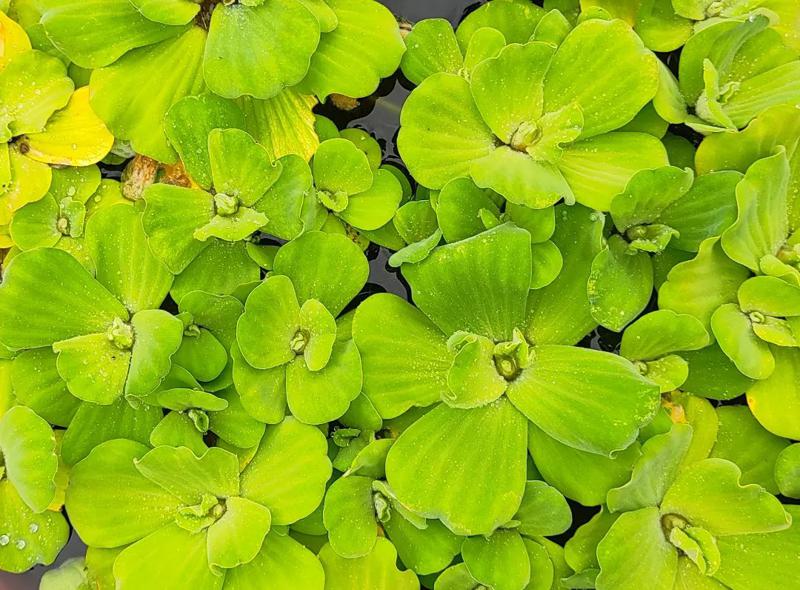
Although most of the leaves of the Water Lettuce (Pistia stratiotes) are exposed to air, their submerged roots are pretty long, where in the wild, can reach up to 32 inches.
Absorbing as much as 80% of the nitrate content in the water, they have enough energy to power up their lettuce-like growth, making them aesthetically pleasing.
Also Read:
- Best Easy Aquarium Plants for Beginners
- High Aquarium pH: Causes, Symptoms, & Cures
- How to Lower & Remove Ammonia in Fish Tank?
- Best Low Light Aquarium Plants
- Best Aquarium Plants That Grow Tall
- How to Keep Fish Tank Clean
- Indian Almond Leaves
FAQs
How Fast Do Plants Remove Nitrates
The degree how fast plants absorb nitrates depends on the mechanism they are using, which varies per species. But in general, it will take at least five days to absorb the excess nitrate and slowly stabilize your water chemistry as the days pass.
How Do I Lower My Aquarium Nitrates Fast?
Removing a part of the chemically-loaded water is the fastest way to lower nitrate levels. You can do this by doing a 20% water change. Just make sure the new water you are adding is nitrate balanced. Otherwise, doing a water change becomes useless.
Do I Still Need Filters when I Have Plants?
Yes. Given that water passes through them, your filter is the perfect medium for the nitrifying bacteria to converge, colonize and perform their part in the nitrogen cycle.
If you opt not to use a filter, nitrifying bacteria will still populate, but sporadically, decreasing their nitrifying capabilities.
Conclusion
Aquarium plants are not just for reducing nitrates, but they also, directly and indirectly, reduce the amount of ammonia and nitrites.
But this does not mean that we will solely rely on their nutrient appetite for them to grow. Aquarium plants still do need a lighting system for photosynthesis where the intensity varies per species.
You may have noticed that the degree how effective they absorb nitrates varies per species. Therefore, using several species of aquarium plants to reduce nitrates is better than one, not to mention how aesthetically pleasing diverse plants bring to your tank.
